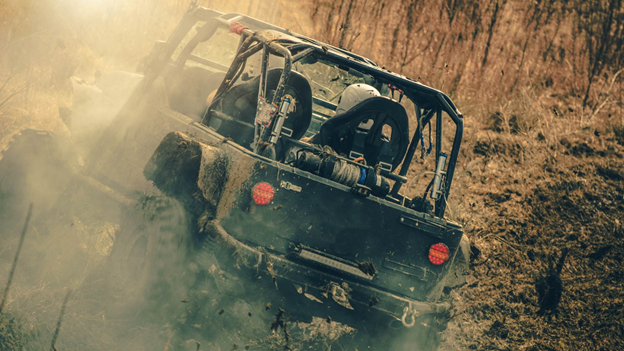Off-roading is a thrilling adventure that allows you to explore nature’s beauty and conquer challenging terrains. Whether you’re a seasoned off-road enthusiast or a newbie looking to embark on your first trail, one thing is certain: the key to a successful and enjoyable off-roading experience lies in the preparation of your vehicle. In this comprehensive guide, we will walk you through the essential steps of preparing your off-road vehicle for the trail. From regular maintenance practices to a pre-trip checklist, we’ve got you covered to ensure your vehicle is in peak condition for your off-road adventures.
Regular Maintenance Practices
Before diving into the pre-trip checklist, let’s first discuss the importance of regular maintenance for your off-road vehicle. Keeping your vehicle in top shape not only enhances its performance but also ensures your safety during off-road excursions.
- Oil Change: Regular oil changes are crucial for your engine’s longevity and performance. Check your vehicle’s manual for recommended intervals and use high-quality oil suitable for off-roading conditions.
- Fluid Levels: Regularly inspect and top up all essential fluids, including coolant, brake fluid, transmission fluid, and differential oil. Adequate fluid levels are vital for your vehicle’s proper function.
- Air Filter: A clean air filter allows your engine to breathe properly. Replace it when it becomes dirty or clogged to maintain optimal fuel efficiency and performance.
- Tire Maintenance: Proper tire care is essential for off-roading. Check tire pressure, rotate tires regularly, and inspect for any damage or wear. Consider investing in off-road-specific tires for improved traction and durability.
- Suspension: Regularly inspect your vehicle’s suspension components for signs of damage or wear. Properly functioning shocks and springs are crucial for off-road stability and comfort.
- Brakes: Ensure your brakes are in excellent condition, as you’ll rely on them for safe off-road driving. Check brake pads, discs, and the brake fluid level.
- Battery: Off-roading may require more electrical power for accessories like winches and lights. Ensure your battery is in good condition and the connections are secure.
- Steering and Alignment: Proper steering and wheel alignment are essential for vehicle control. If you notice any alignment issues or difficulty steering, address them promptly.
- Exhaust System: Check for exhaust system leaks or damage that could introduce toxic gases into the vehicle’s cabin during off-road adventures.
- Transmission: Regularly service your off-road vehicle’s transmission and ensure it’s in good working order for smooth gear shifts and overall performance.
Pre-Trip Checklist
Now that your off-road vehicle is well-maintained, it’s time to create a pre-trip checklist to ensure nothing is overlooked before hitting the trail.
Visual Inspection:
- Examine the entire vehicle for any visible damage, loose bolts, or parts that may have come loose.
- Check for any fluid leaks under the vehicle.
Tires:
- Verify that tire pressure is set according to manufacturer specifications and suitable for the terrain you’ll encounter.
- Inspect tires for cuts, punctures, or sidewall damage. Replace damaged tires.
Suspension:
- Check for any signs of suspension damage or leaks.
- Ensure that the suspension components, including shocks and springs, are securely attached.
Brakes:
- Test the brakes to ensure they are responsive and functional.
- Verify that the emergency brake is working correctly.
Lights and Electrical Systems:
- Check all exterior lights, including headlights, taillights, turn signals, and brake lights.
- Ensure that electrical accessories like winches, lights, and radios are working correctly.
Fluids:
- Confirm that all fluid levels are adequate, including engine oil, coolant, brake fluid, and transmission fluid.
- Carry extra fluids for top-ups during the trip.
Tools and Recovery Equipment:
- Pack essential tools, including a tire repair kit, jack, lug wrench, and a comprehensive toolset.
- Bring recovery equipment such as tow straps, shackles, a winch, and a high-lift jack.
Spare Parts:
- Carry spare parts that are prone to wear or failure, such as belts, hoses, and fuses.
- Ensure you have the necessary tools to replace these parts if needed.
Safety Gear:
- Pack essential safety gear, including a first aid kit, fire extinguisher, and emergency signaling devices.
- Consider carrying a GPS device or maps of the area.
Fuel and Supplies:
- Ensure you have a full tank of gas before starting your off-road adventure.
- Bring enough food, water, and supplies to last the entire trip, accounting for unexpected delays.
Communication:
- Carry a reliable communication device, such as a two-way radio or satellite phone, for emergencies or staying in touch with your group.
Off-Road Permits and Regulations:
- Research and obtain any necessary off-road permits or passes for the specific trails you plan to explore.
- Familiarize yourself with local off-road regulations and guidelines.
Conclusion
Preparation is the key to a successful off-road adventure. By following regular maintenance practices and meticulously completing a pre-trip checklist, you can ensure that your off-road vehicle is in peak condition for the trail. This not only enhances your vehicle’s performance but also contributes to your safety and enjoyment during off-roading excursions. So, before you hit the trail, take the time to prepare your off-road vehicle properly – it’s the first step toward unforgettable off-road adventures in nature’s playground.


